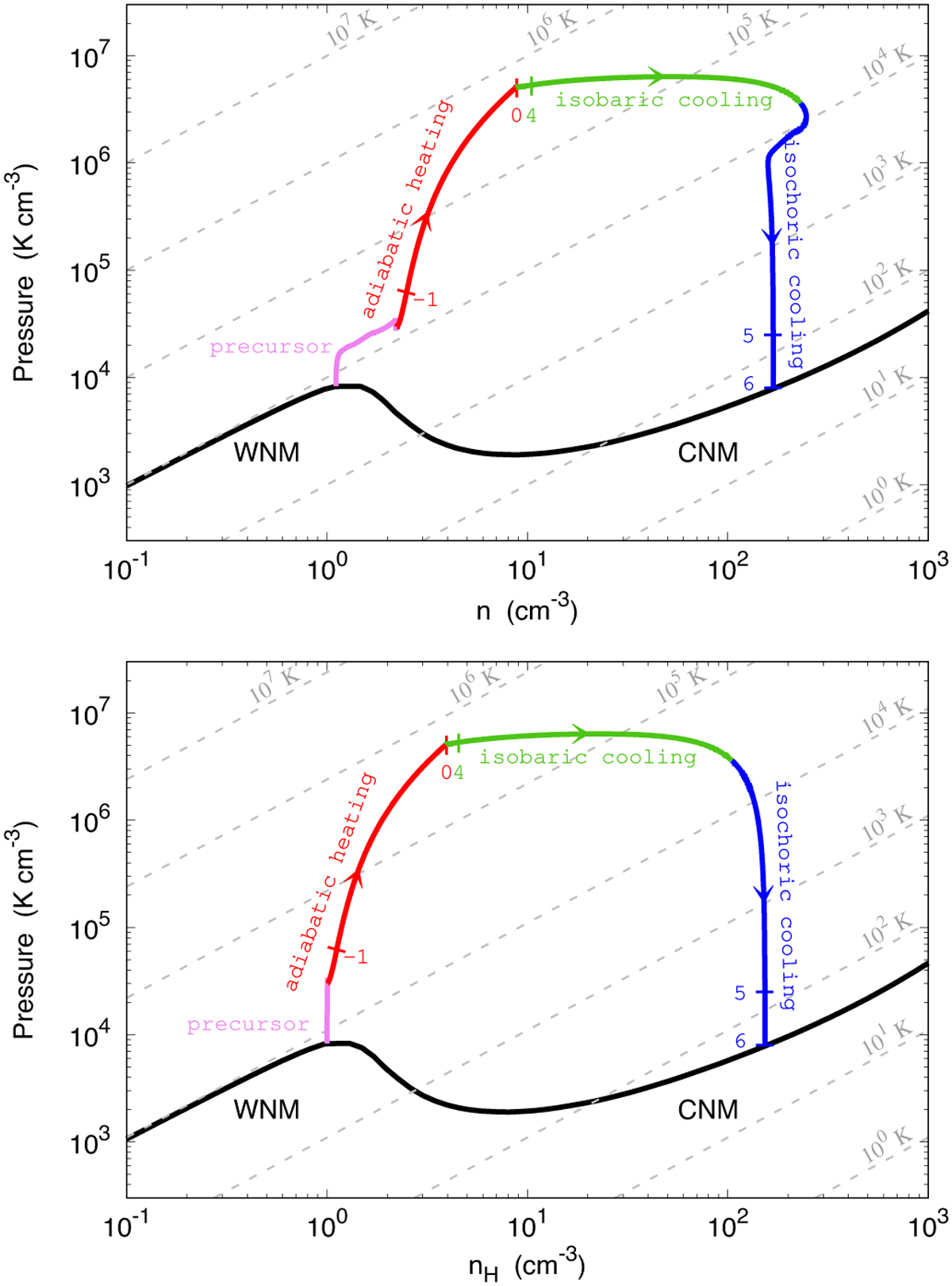Fig. 5

Download original image
Trajectory of a shocked fluid particle from the ambient medium to the postshock region obtained in the standard model. The trajectory is displayed in a particle density versus thermal pressure diagram (top panel) and in a proton density versus thermal pressure diagram (bottom panel) to highlight the phase transition from the WNM to the CNM induced by a shock at 200 km s−1. A fluid particle initially evolves through the radiative precursor (pink curve). As it crosses a shock front, it undergoes three successive regimes: an adiabatic heating (red curve) followed by a quasi-isobaric cooling (green curve), and finally a quasi-isochoric cooling (blue curve) as the magnetic pressure becomes dominant in the postshock gas. The black curve indicates the thermal equilibrium state of the diffuse gas obtained for G0 = 1 (see Fig. 1). Light gray lines are isothermal contours from 1 to 107 K (from bottom right to top left). We note that these isocontours are evenly spaced in the top panel but not in the bottom panel. Tics on the trajectories indicate the time, in log scale, starting from the adiabatic phase, ranging from 10−1 yr to 106 yr.
Current usage metrics show cumulative count of Article Views (full-text article views including HTML views, PDF and ePub downloads, according to the available data) and Abstracts Views on Vision4Press platform.
Data correspond to usage on the plateform after 2015. The current usage metrics is available 48-96 hours after online publication and is updated daily on week days.
Initial download of the metrics may take a while.


